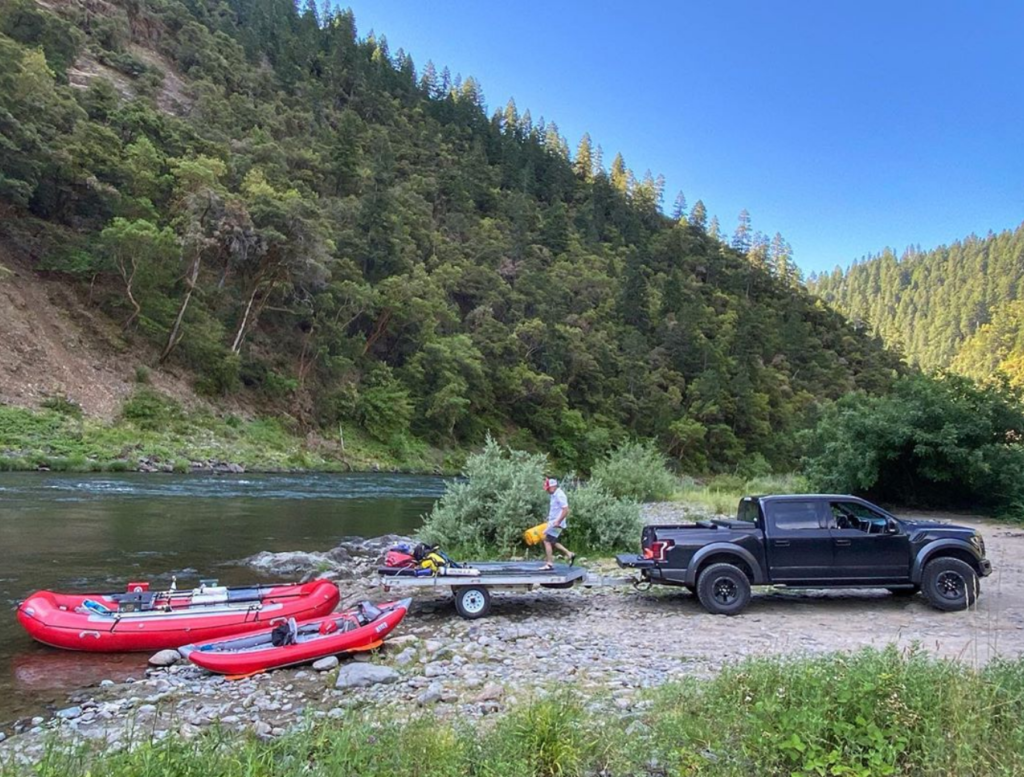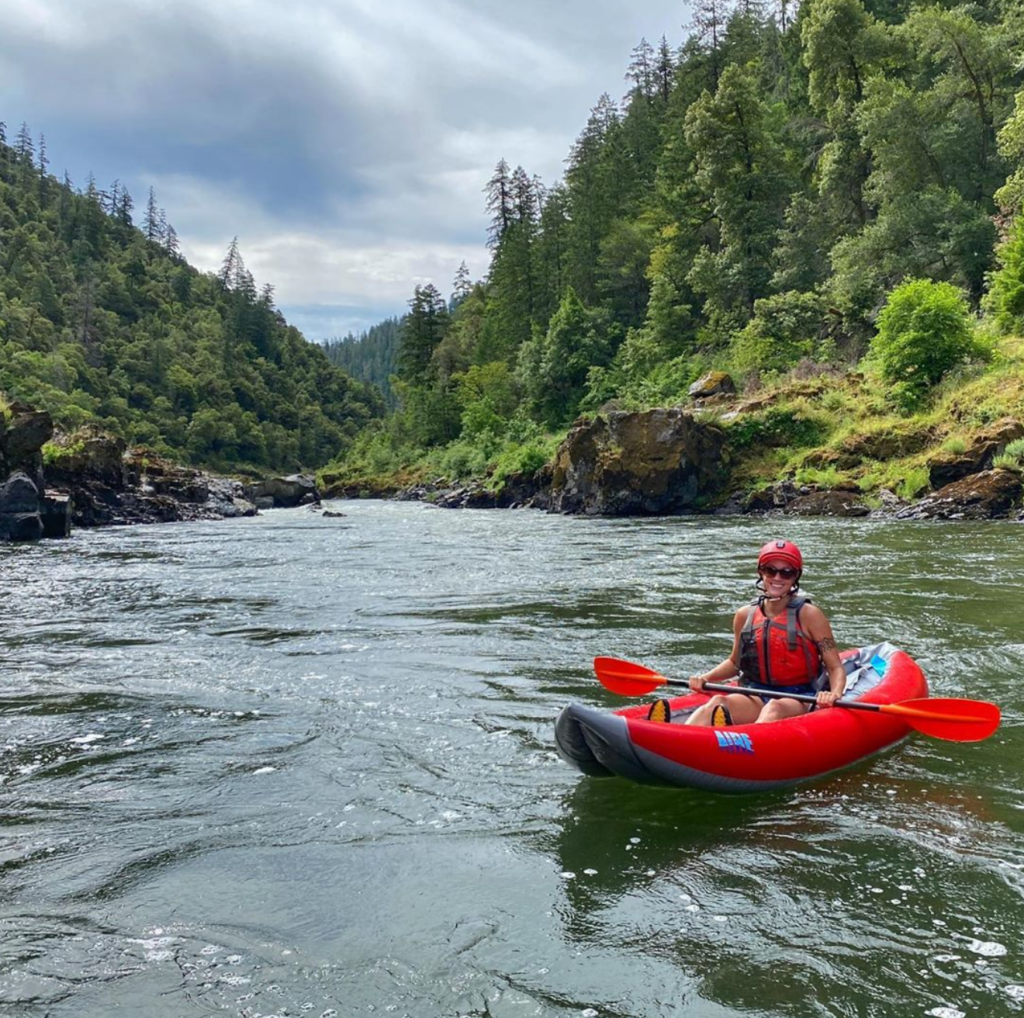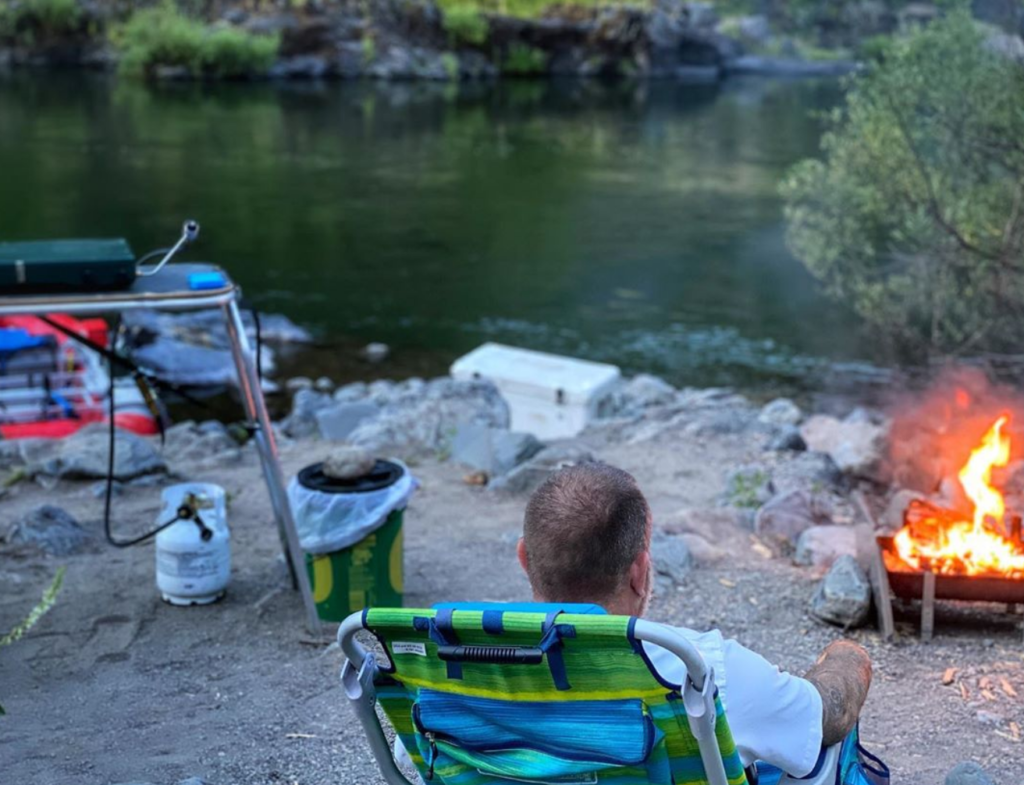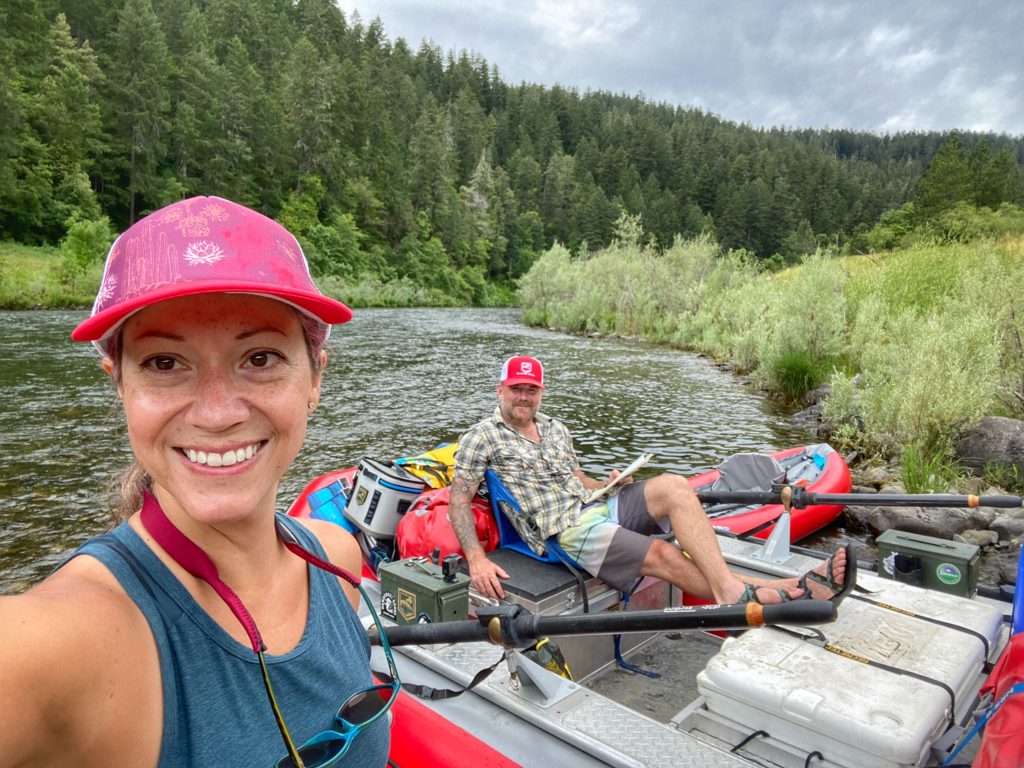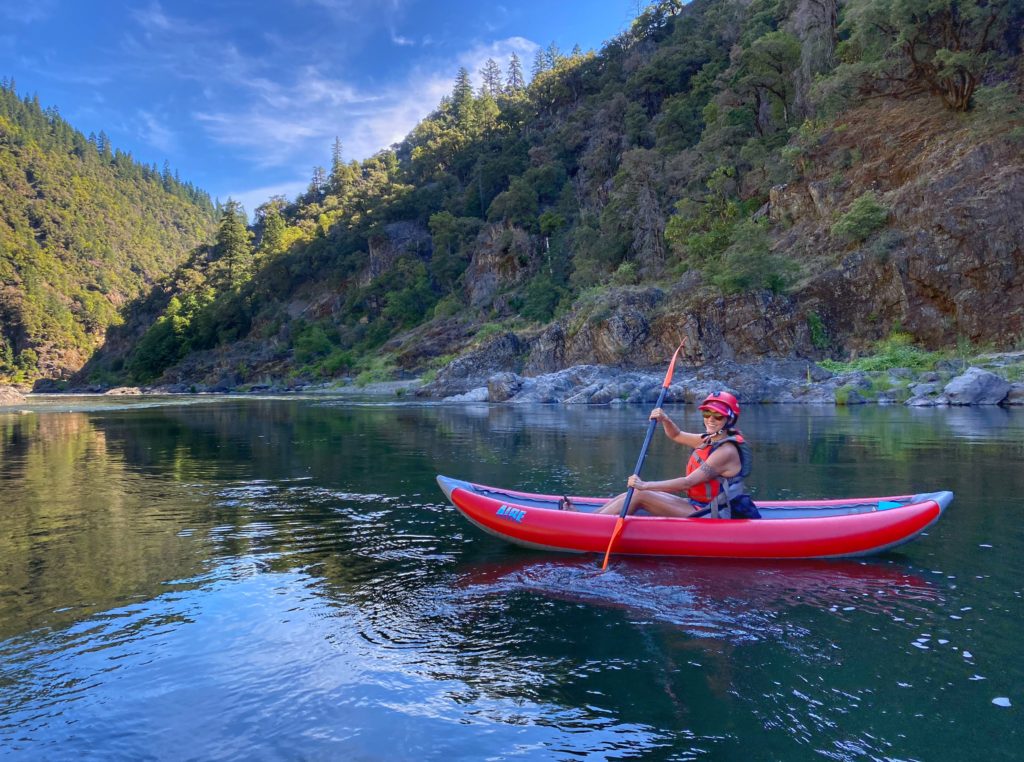Jun
30
Rogue trip 2020, part two: if something gets in your way, turn
Filed Under Uncategorized | 8 Comments
[Part one] About 11 miles down the river is Jenny Creek, an idyllic spot on the south bank where we camped the first night. I could hardly imagine a better campsite but our last night on the river was even more amazing, with a gentle sloping sandy beach and a friendly family of deer wandering through camp.
Our second night was spent at Marial Lodge, which was a combination of experiences I really appreciated: I love camping, but I can’t lie, I love showers and flushable toilets just a tiny bit more. Marial is incredibly charming, with a cozy lodge to hang out in, enormous home-cooked meals to savor, and the world’s friendliest dog to play with.
Day one offers the most rapids, day two is relatively chill with a few big splashes, and day three is the most intense at the start, with the rock walls narrowing and the ground dropping to create the fast-moving Mule Creek Canyon at mile 21. We hiked the night before to an overlook where I watched the great rushing boil of water and firmly abandoned my original half-baked plans to take the kayak through.
(A piece of slightly comical advice from a guide to the Rogue on Mule Creek: “Your goal should be to keep your boat straight, and moving forward.” Yes, much like the helpful skiing instructions from Better Off Dead: “Go that way, really fast. If something gets in your way, turn.”)
John took us through Mule Creek on his raft with barely a bump, even in the infamous Coffee Pot at the end, which is essentially a roiling bowl of crazy. This isn’t my photo (credit: NW Rafting) but it shows the setup: the combination of a small space and a whole lot of water power can be very challenging.
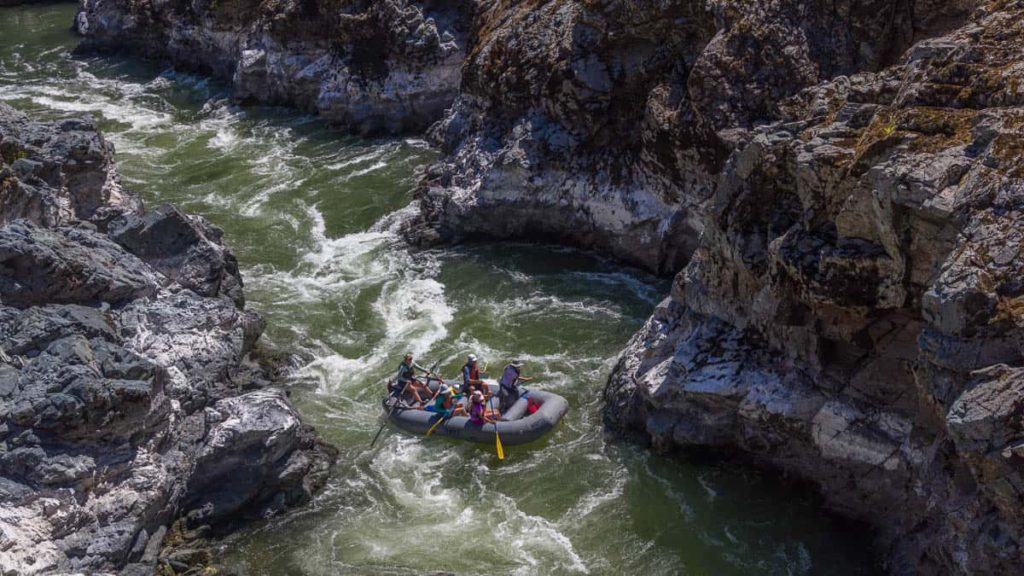
After Mule Creek comes Blossom Bar, the most difficult rapid of the river. I guess it is a class IV, the same as Coffee Pot, but it’s scarier because of the potential consequences. Blossom was originally unnavigable, with early miners and explorers essentially hand-dragging boats through the giant rocks before it was cleared with dynamite, and now it remains a boulder-strewn churn that demands precise navigation.
The first and most important move is to avoid the so-called “picket fence,” a line of big undercut rocks that can act as a trap and a fatal sieve. A hard turn at the exact right moment is required before moving with the current through powerful lateral waves and quickly eddying out before picking your way through even more rocks.
My first times through Blossom were on foot, walking around the rapid with our kids. As the boys got older they were able to walk through on their own and I rode with John, with one memorable trip that resulted in us briefly high-siding on a rock before thankfully sliding free.
On this journey, John perfectly executed the entire run without even a single impact. “Like buttah!” I howled, zingy with post-Blossom relief and pride, and then I gave myself the solemn promise that I too would successfully navigate this rapid on my own someday JUST KIDDING I am pretty sure I am never doing that ever.
I did paddle the rest of our time on the river, though, to our campsite at Tacoma Camp and all the way out on the morning of day four. Every day we saw bald eagles, osprey, great blue herons, river mink, turtles, tiny lizards, and once, a disturbingly large leaping fish that was either a salmon or young sturgeon (also a reminder that deep waters are never to be trusted). We cooled off from the hot sunshine in the river by day and sat by crackling campfires at night. We told stories and laughed a lot but spent most of our time in companionable quiet, happily lost in the ever-changing landscape and waters.
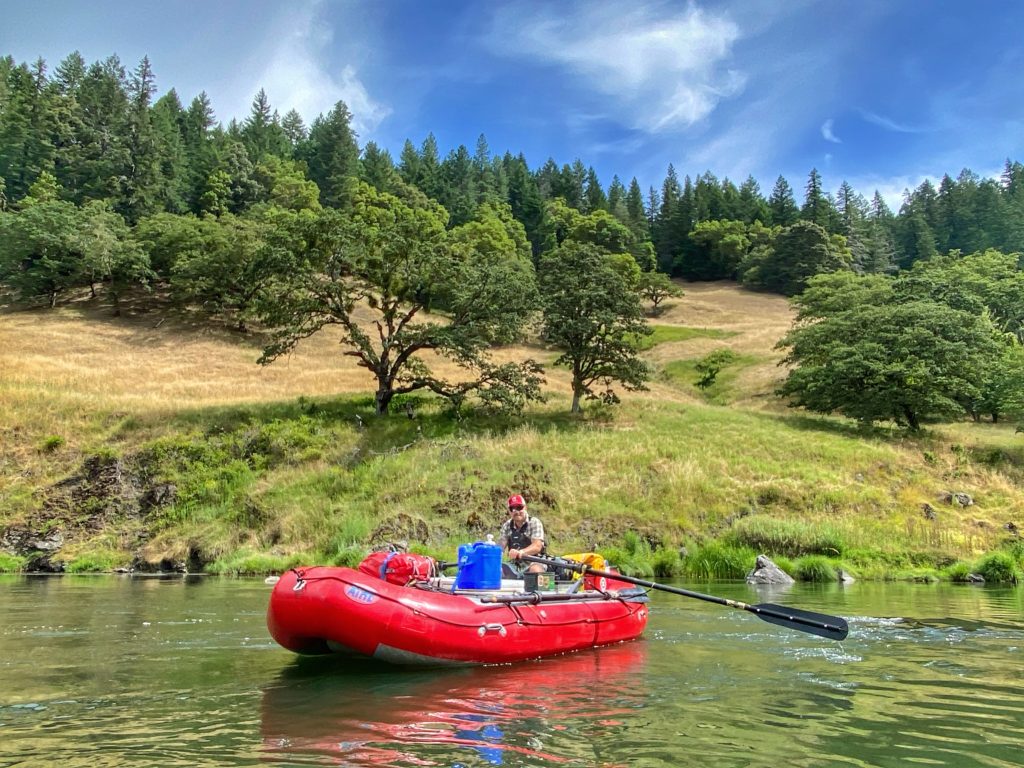
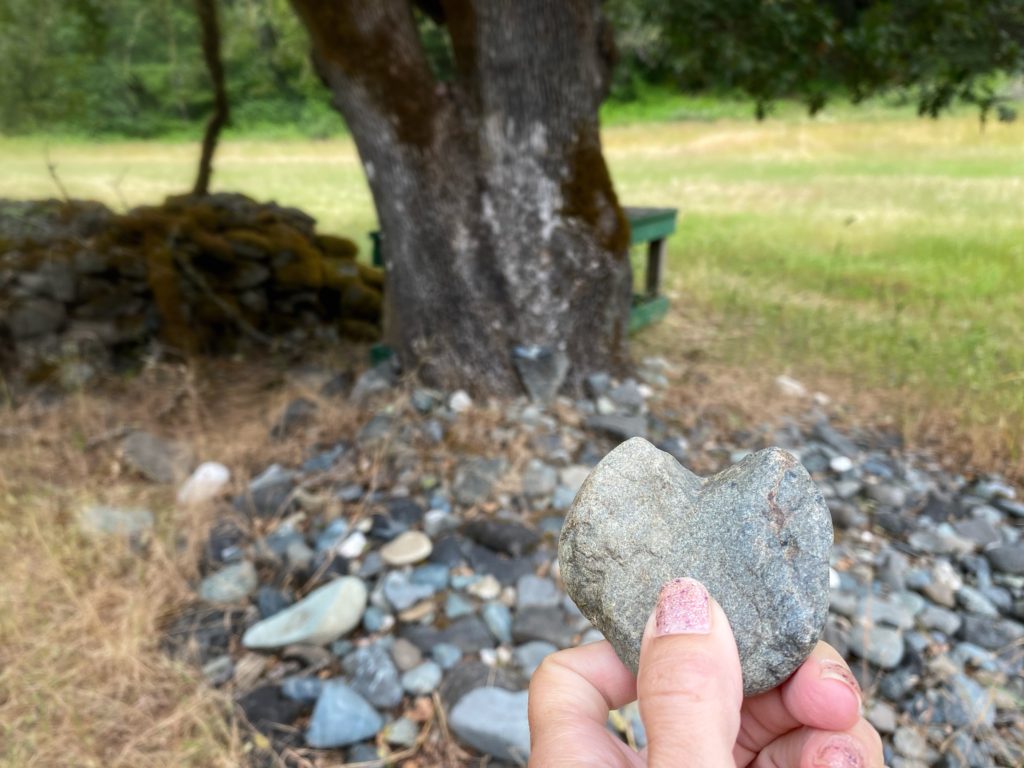
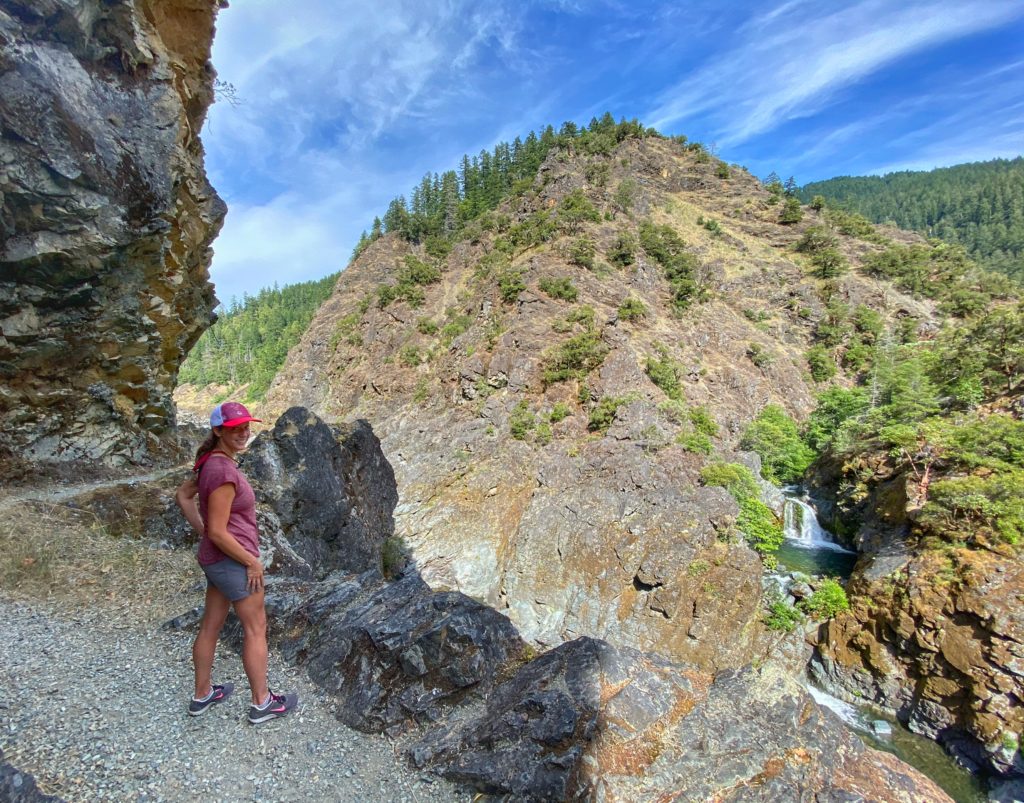
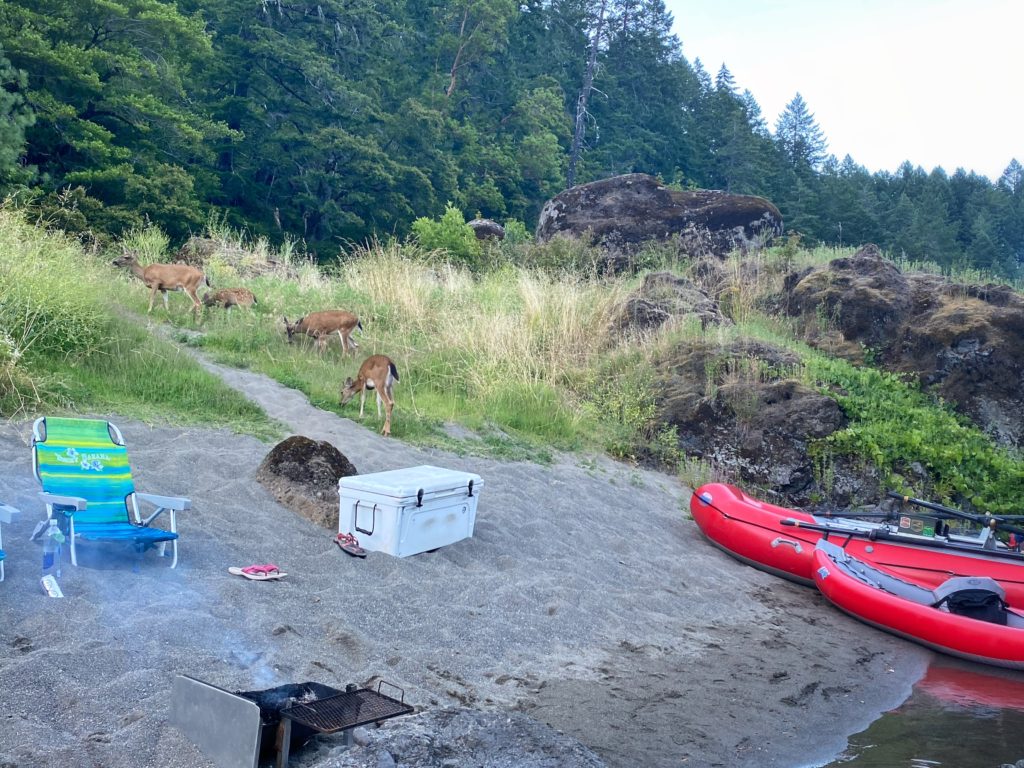
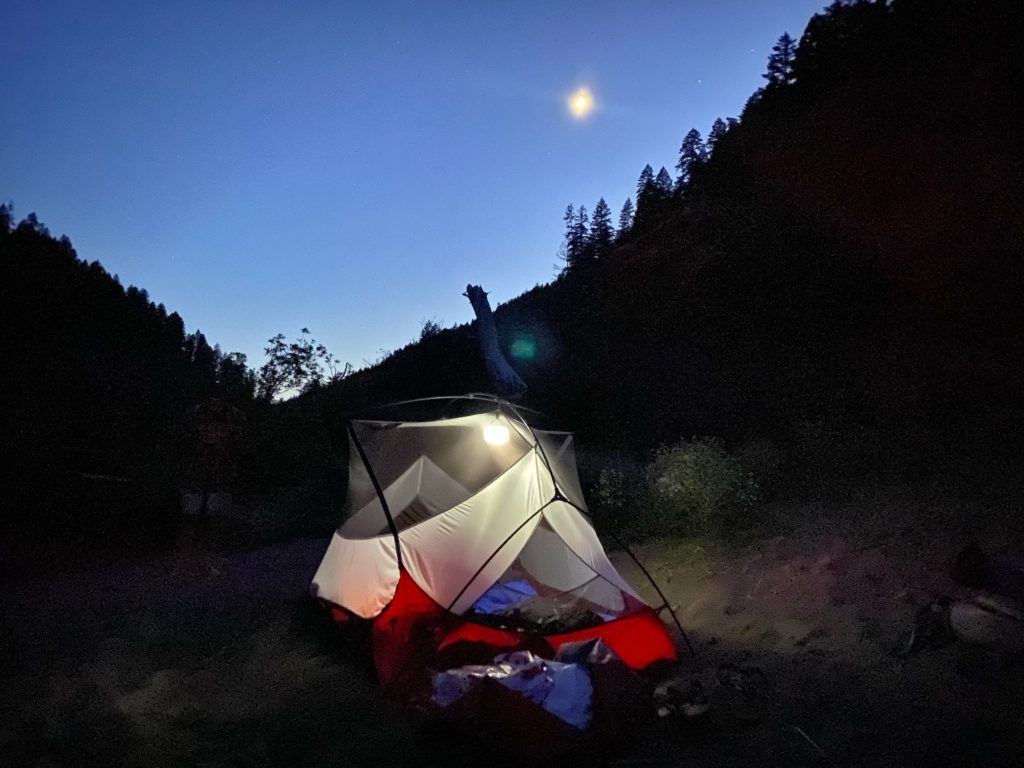
Since we got back home I’ve been trying to curb my screen time and news reading, to try and hold on to just a bit of that peace of mind the Rogue brings. There is truly nothing like this place, and I can’t wait to go back.
Jun
28
The Rogue River is about 215 miles long, connecting the Cascade Range to the Pacific Ocean. It was one of the original eight rivers designated Wild and Scenic in 1968, with 84 miles protected from development and motorized boats and regulated by permit. Out on these waters there is no cell service, no power lines, no passing cars or circling jet skis — just the rush and burble of water, the rallying cry of osprey, the humming summer buzz of insects.
It has always been the perfect place to unplug and slow down, and now more than ever its remoteness offers a true escape from the rest of the world.
Years ago John and I stood on the trail that parallels the river and made a pledge to ourselves: we would find a way to move from the Seattle area to Eugene, to be closer to the cabin and family but maybe most of all to be closer to the Rogue. I always think of this promise when we’re there, and how that river changed the flow of our own lives.
We were at the Rogue for Father’s Day weekend, enjoying our annual family stay at Indian Mary campground before bringing the trailer home and doing an epic unpack and re-pack to turn right around and head south again. John’s parents met us on the road to take the boys to Coos Bay, and John and I stayed the night in Galice before getting on the water Tuesday morning.
From our put-in spot at Argo, we floated to Grave Creek falls, the first major rapid (class III) of the day. John was in his raft with all of the gear, I was in an inflatable kayak, which I’d tried for the first time last year on the river and fell in love with.
I sailed through Grave Creek and successfully navigated the next tricky spot, the fish ladder that offers a bumpy but far less terrifying alternative to class V Rainy Falls (although I completely biffed the part where I was supposed to wait for John’s whistle before going through, I never heard it and thus stayed for far too long which prompted John to start hiking around to rescue me before I finally just went for it). (“You’ll start to second guess hearing it, but it’s unmistakable,” John had told me, which turned out to be only partially true.)
Now, I wouldn’t say I was getting cocky at this point, but I definitely felt confident in my paddling skills. The plan all along was for me to ride with John through the two most dangerous sections but I started thinking how amazing it would be to say I’d run the entire thing on my own. That was about the point I started coming out of the kayak, not once but four times throughout the day.
“What is going wrong?” John asked at one point, to which I angrily replied, “I KEEP FALLING OUT OF THE FUCKING BOAT.”
Eventually we determined that there were a few factors at play: the oar for my kayak was slightly shorter than I was used to, there were no footholds in the boat to dig myself into, and my paddling technique needed to be more aggressive. I learned that when a big wave came at me at an angle, I had to help myself out by really leaning into it and digging into the water rather than assuming/hoping the boat would right itself before tipping me out sideways.
These lessons were learned from multiple unwanted swimming outings, each which happened so fast there wasn’t really time to be super scared. I was lucky enough not to hit any rocks when I was in the water, but I can tell you it is quite the experience to come up from a dunking and be rushing along at what feels like eight trillion miles per hour while somehow hanging onto the oar. At one point the kayak was actually on top of my head while I was submerged, which I registered just long enough to realize with a strange calmness that I was trapped and would have to fight my way out before things shifted.
The third and fourth time I came out was in Upper and Lower Black Bar Falls, once at the start of the drop and once more at the end. It was enormously humbling, and reminded me of the time years ago when Riley was a toddler; he kept climbing up a slide backwards before falling all the way back down, only to repeat the exact same action moments later while wailing with pure frustration, “Not AGAIN!”
It was a steep learning curve but I think I did gain some valuable insight that served me through the rest of the trip, because I didn’t flip again. John added a temporary strap near the front of the kayak which offered a stabilizing foothold, and I worked harder at paddling, mentally chanting NOT TODAY SATAN (along with my normal whitewater earworm, the ridin’ the gravy traaaaaaaaaaiiiinnnn line from Pink Floyd’s “Have a Cigar”) whenever I was tossed around.
I’ve been down the river multiple times in a raft or catamaran while someone else paddles, but being in a kayak is a whole different feeling. You have more freedom, you’re more nimble, it’s more vulnerable but also more immersive; it’s somehow like being part of the water. It is like dancing, or what I as a non-dancer imagine dancing to be like, a joyous movement that celebrates life with every breath. It is like surrendering yourself to the world and feeling your boundaries blur in some deliciously indescribable way, like tapping into a greatness that is beyond human understanding.
It makes me think of the lyrics from Fiona Apple’s “I Want You To Love Me”:
I move with the trees
In the breeze
I know that time is elastic
And I know when I go
All my particles disband and disperse
And I’ll be back in the pulse
I felt this wondrous sense of being rolled back in time, on the river and at camp. Squatting near a creek washing my clothes on a rock, feeling my hips settle into that age-old stance; gazing at the mesmerizing licks of flame in our campfire and the glorious wash of ancient stars overhead.
As though the world was untouched and uncomplicated, a place of raw beauty in which basic needs take priority over everything else. A vacation like no other, a respite and a reminder and a practice in gratitude for everything I am lucky enough to have in my life.
